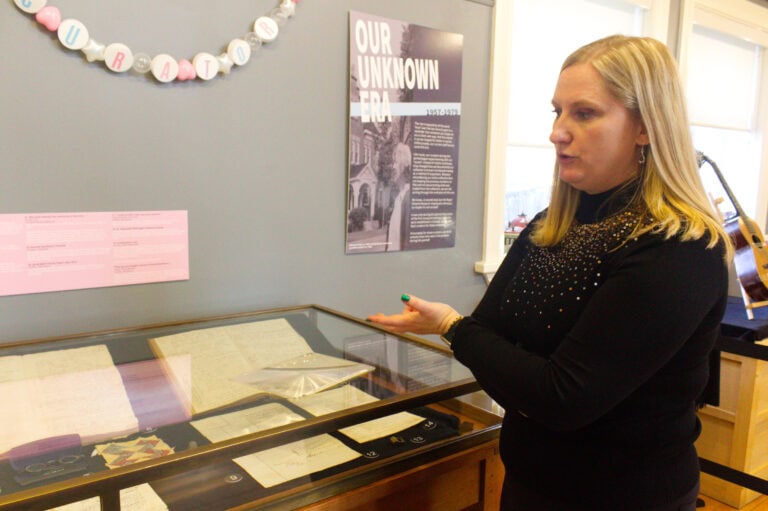Niagara-on-the-Lake farmers say they’re proud of how they treat their workers — and frustrated by national reports that, they feel, don’t reflect what’s really happening on their farms.
In the wake of a cross-Canada survey detailing worker mistreatment and concerns over five proposed federal program changes, farmers point to their long-standing relationships with temporary foreign workers, strong housing standards, healthcare access and a system they say already works — and can be improved, if need be.
The Migrant Rights Network’s report, released July 30, shared input from 514 migrant workers across Canada with an average of 6.2 years of experience in the country’s temporary foreign worker programs.
It aimed to reflect how workers felt about the changes proposed by Employment and Social Development Canada, and, from its point of view, states that tied permits, poor housing, wage deductions, healthcare barriers and limited transportation coverage all enable exploitation.
The coalition consulted workers from the four streams within the program, but each stream has its own regulations, says William George, labour section chair of the Ontario Fruit and Vegetable Growers’ Association.
Most farmers in NOTL — including all those interviewed for this story — operate under the seasonal agricultural worker program, says George, a grape grower in the Beamsville area.
“A gold standard,” he said, “and a program that should be modelled after, not discarded.”
“If it’s not broken, why try to fix it?” he said. “Government wants to streamline stuff, and we’re just working through that process.”
George and his committee commented on the federal discussion papers that were distributed to groups in May 2024.
“I’m one of the lead people that’s been involved,” he said. “Trying to look at how to make the program better for everybody involved — not worse.”
He said it will likely be a year or two before the consultation process reaches any conclusions, so the coalition is “drawing conclusions before the process is even half over.”
“It’s certainly not, in my view, the right time to do it,” he said about the report.
“Like if we’re having big turnovers, then I can understand it. But that’s not the case.”
George said federal proposals weren’t triggered by reports like the UN’s, as he said some have claimed — they were already underway and driven by administrative efficiency.
“(The coalition) is painting a pretty negative picture,” he said. “Cherry picking certain facts that aren’t really being considered.”
“I’m not saying they’re wrong on every occasion, but some of the stuff I’m seeing, I know was wrong,” he said.
At Glenlake Orchards and Vineyards, NOTL resident Kevin Buis’s farm, workers drink the same water he and his family does, so the photos provided by Migrant Workers Alliance for Change, which The Lake Report ran in last week’s edition, left him confused.
The Migrant Workers Alliance for Change didn’t disclose the specific locations of the photos it supplied, only the provinces in which they were taken.
Buis said the program is highly regulated, turnover is low and occasional off days are normal — but he’s never seen conditions like those in the photos or had to confront another farmer over mistreatment.
It’s also not what happens at his farm, where some workers have returned to work for 20 years, he said.
“I had a couple of them say to me, ‘Why don’t you guys plant more fruit? Because we like working for you,’” he said.
Farmer and Coun. Erwin Wiens has not witnessed anything like that either, calling the photos “frivolous and unsubstantiated.”
“This would never have passed any housing inspection,” he said.
At Erwin Wiens Vineyards Ltd., workers have a car, internet, air conditioning and their own rooms, said Wiens. There’s no on-site laundry due to a lack of city water, but he provides access off-site, sticking to contract.
Wiens wants surveys to focus on facts, not push an agenda. He questioned whether that was the coalition’s intent.
“A survey is not meant to presuppose the answer,” said Wiens.
People will naturally say yes to certain questions, but he said that doesn’t mean the situation is unfair.
“I didn’t see anything innocuous in that white paper that I disagreed with, in the sense that, how are we going to move things in a different direction if we want to?” he said.
The seasonal agricultural worker program, as it is now, is great, Wiens said.
Transfers possible with or without mistreatment claims
George said the program was never intended as a pathway to permanent residency — it’s to bring workers to Canada seasonally, not for immigration.
Most workers he speaks with, he said, don’t want to live in Canada permanently.
While work permits are tied to specific farms, George said protections exist for workers who want to leave.
Those facing mistreatment can apply for an open work permit for vulnerable workers and be moved “as soon they possibly can.”
“I think there was quite a few individuals that applied for that last year,” he said.
George understands why some workers might worry about being labelled a “problem,” but said he believes the system allows them to safely transfer regardless of what an employer says.
Even without citing mistreatment, workers can request a transfer through their liaison officer and be moved to another farm, if available, like “if they don’t really like picking strawberries,” he said.
Deductions: pushback on ‘doom and gloom’ framing
Proposed guidelines could allow employers to deduct up to $12,892 a year — or 0.5 to 30 per cent of a worker’s gross monthly income — for housing costs.
“We’re not trying to make the workers make any less than they are currently making: full stop,” said George.
“I don’t think what (the coalition) presented was balanced at all,” he said. “There’s two ends of the spectrum and they’re trying to take everybody to the doom and gloom.”
He acknowledged deduction figures mentioned in the papers, but said they were part of a range — with the other end maintaining the current system, which “for most of the programs, is zero housing deductions, other than a very minor $2 or $3 a day that the guys pay for incidentals.”
If deductions were ever introduced, wages would likely increase to offset the cost, he said: “It’s not a one-sided thing.”
While the job isn’t meant to support workers year-round, George said wages still go a long way in supporting their families.
Wiens supports the system as it is now and said it’s important to understand “the small margins of agriculture.”
He added that, in Canada, housing is considered “affordable” if it costs less than 30 per cent of a household’s income before taxes.
It’s fair, he said, what workers currently pay for housing with amenities like air conditioning, internet, utilities and transportation — all of which he said he provides — especially since it costs farmers more to offer them.
Farms must pass inspection
The coalition raised concerns about poor living conditions, but George, Buis and Wiens all said their worker housing meets high standards and wouldn’t raise any concerns.
“They’re putting photos out there that, I can’t see that happening, at least for sure the brown water one,” said George. “Our houses are inspected twice a year.”
If that’s happening it should be reported, George said — “and it will be corrected.”
Buis said farms must pass a housing inspection within eight months before applying for workers.
While farmers can’t control the heat, Wiens said they receive regular updates and safety guidance to protect workers during extreme temperatures.
Full OHIP, no barriers, say growers
Workers in Ontario receive full OHIP coverage as soon as they arrive, George said, unlike in some other provinces where employers might have to provide private insurance.
“When (the coalition) says there’s no health care, I’d like to know where that’s happening,” said Wiens.
The Migrant Rights Network says its survey indicates that workers want coverage from day one on the job, paid sick days, safe and independent access to services and support for workers and their dependents back home.
Wiens rejected coalition claims that farmers block access to health care through interference and a lack of immediate coverage upon arrival. “Who would stop anybody from getting healthcare?” he said.
“They’re saying things without any evidence, ” he said, pointing to the Farmworkers Hub, which has a nurse practitioner to support migrant workers on Sundays.
“They also have the clinic hours,” he said.
Buis said his workers have no issue getting health care when needed.
“Wherever they got to go, we encourage them to get it done while they’re here working producing food for Canadians,” said Buis. “We encourage them to use our health care system.”
“My guys go to the doctor all the time,” he said. “We got them driver’s licenses and both houses have minivans.”
Buis said he respects their privacy, such as when he’s asked to take one of his 14 workers in for a specialized test.
Travel isn’t free, but it’s fair: farmers
The coalition said proposed transportation options stop short of requiring full employer-paid travel and overlook that workers still cover flights, transit, food and lodging en route.
But George said travel costs are currently shared, with workers typically covering one-way airfare and employers covering the return trip.
“Any job you take, you’re going to have to pay some costs,” he said.
George said the goal is for workers to come out ahead, but farms can’t operate without workers covering some costs as well.
“They’re coming here for a reason,” he said. “It’s good for them.”
Wiens said the program has long benefited both Canada and developing countries and warned against efforts to undermine it for personal agendas.
He said bad actors are the exception, but their actions unfairly reflect on the broader farming community — especially in a place like NOTL, where agriculture is central.
“(Migrant workers) are amazing employees — and they’re happy to be here,” he said.











